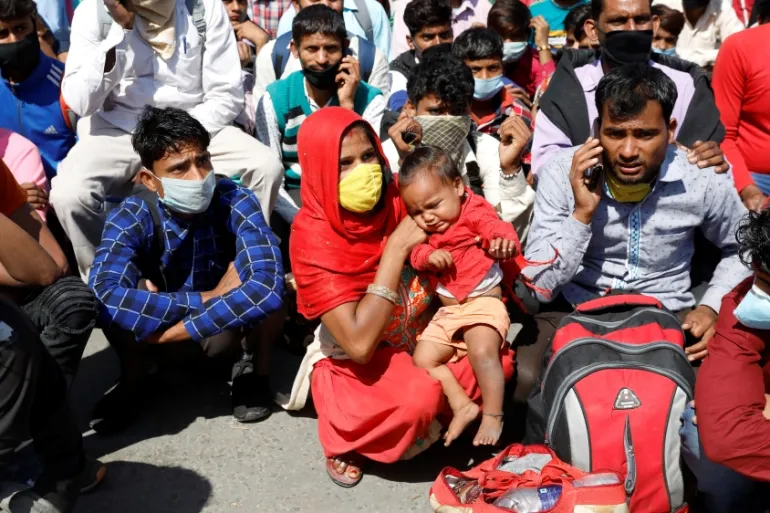Abstract
A large number of people have sought refugee status in India ever since partition, this includes Tibetans, Sri Lankans, Afghans, Bhutanese, Iranians, Somalis, and Sudanese. But India lacks a national refugee policy and is also not a signatory to the 1951 convention relating to the status of refugees and the 1967 protocol outlining the international standards of treating and protecting people seeking refugee. In recent years India has been facing an acute refugee crisis due to instability and disruptions in neighboring countries like Myanmar and Bangladesh. Further, this problem has been escalated due to a non-uniform domestic legal framework, leading to an ad hoc approach in addressing these issues. The paper below analyses refugee laws in India, and the changes required, and proposes a model refugee law designed specifically for India considering its socio-political dynamics.
Keywords- Refugee, Asylum, UNHCR, Geneva Convention, Foreigners Act.
Introduction
India has seen a large influx of migrants, refugees, and asylum seekers since its independence. Most of the Refugees have been from neighboring countries like Pakistan, Bangladesh, Tibet, Nepal, Sri Lanka, and Myanmar. Given the large population of refugees in India, their rights and freedom become a very important issue. Currently, India has no Uniform law for refugees, instead refugees in India are governed by the general laws relating to foreigners. The general laws vary from case to case and do not guarantee safeguards as they are entitled under international refugee law, leading to more confusion and complexity around refugee rights. Even the judgments and the interpretations given by the Supreme Court and the High Court have been so far from uniform that it has become difficult to come to one conclusion. Internationally, India has signed some treaties regarding Human rights and it has been a part of the executive committee (Excom) of the United Nations High Commissioner for Refugees (UNHCR), but India is not a signatory of a framework for refugee protection such as the 1951 Convention and the 1967 protocol relating to the status of refugees. To end “adhocism and ambiguity” in dealing with refugees and asylum seekers in the country, the formulation of national refugee law in consonance with the international framework has become a necessity.
Overview of the Refugee Situation in India
From time immemorial India has been a very welcoming place to people across faiths fleeing persecution, from Parsis centuries ago to Tibetans(from 1959), Bengalis from Bangladesh(in 1971), Sri Lankan Tamils, people from Myanmar, and also Pakistan. During the Holocaust, around 5000 persecuted Jews from Europe came to India and made it their home. However, India lacks a legal comprehensive framework for dealing with refugees, leading to an ad hoc approach to dealing with refugee issues.
In recent times, there has been a large influx of illegal migrants in India from its neighboring countries like Myanmar and Bangladesh. People are crossing borders to escape persecution and other threats in their home country but the sudden influx has created a refugee crisis in India and the security concerns associated with large-scale refugee movements cannot be overlooked. One such case is of Rohingyas who have entered India illegally in large numbers since 2021, UNHCR says nearly 60,000 refugees have fled to India since Myanmar’s military toppled the country’s democratically elected government and seized power in 2021, setting off a bloody civil war that has claimed thousands of lives. To deal with the crisis, the Indian government has taken a firm stance by announcing the deportation and detention of illegal migrants from Myanmar. In 2017, Shri Kiren Rijiju Presented in Rajya Sabha that as per estimate, more than 40,000 illegal Rohingya immigrants are presently staying in India. There is no accurate data because most illegal immigrants tend to enter in clandestine and surreptitious ways without travel documents but the numbers must have increased since then. On May 2, 2024, Manipur Chief Minister Nongthambam Biren Singh announced the deportation of 77 “Illegal immigrants from Myanmar” on his social media page, calling it the “first phase”. He also said the process of deporting some 5,400 more “illegal immigrants” was underway. Officials in Manipur have blamed refugees for igniting communal clashes over the past year. However, this process is against the Internationally acknowledged principle of ‘non-refoulement’ thus, the Human Rights Watch and International Commission of Jurists have shown their concern over Rohingyas’ forceful deportation to Myanmar where the Civil war is still raging.
Click Here To Download The Paper.


📌Analysis of Bills and Acts
📌 Summary of Reports from Government Agencies
📌 Analysis of Election Manifestos

